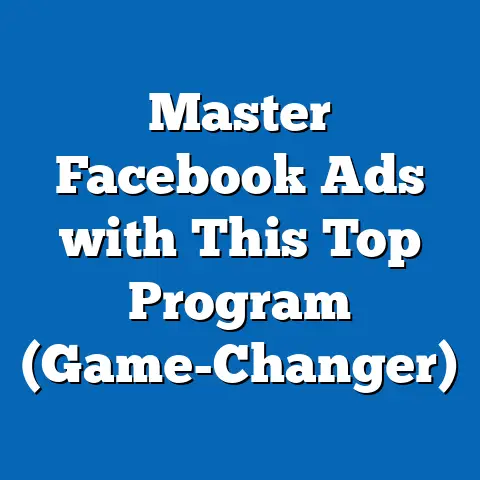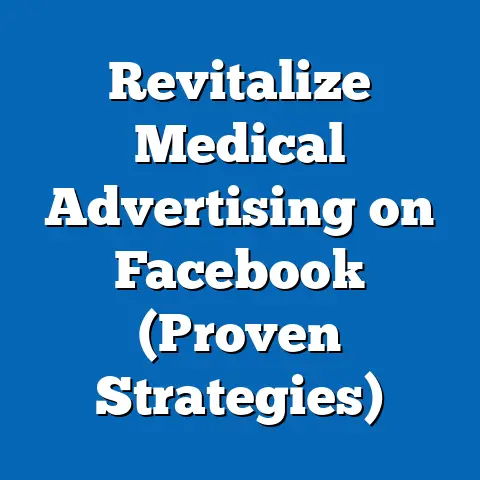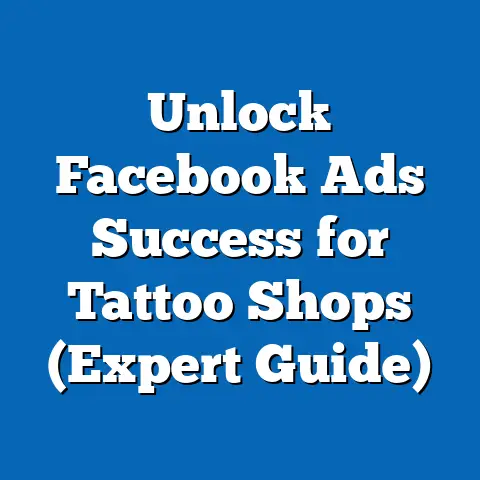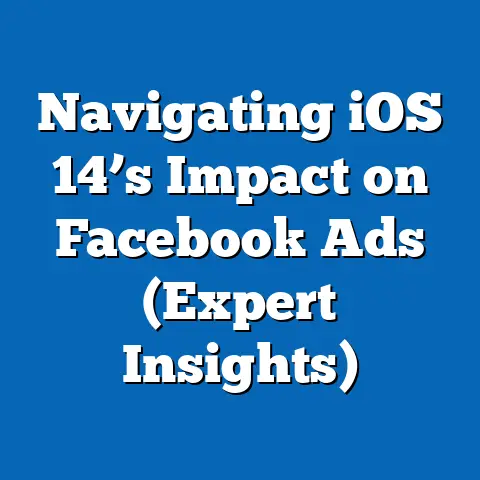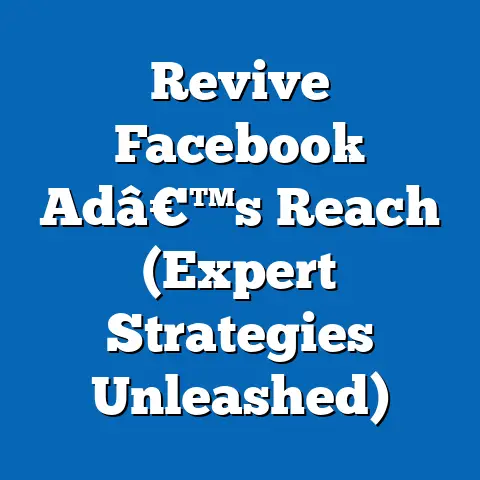Maximize Pet Product Sales with Facebook Ads (Pro Strategies)
Have you ever wondered how some pet product brands seem to effortlessly dominate social media feeds, turning casual scrolls into sales within seconds? I’ve seen it happen time and again. It’s not magic, but a strategic blend of understanding the pet product market, mastering Facebook’s advertising platform, and crafting compelling campaigns. As someone deeply immersed in the world of digital marketing, particularly in the pet niche, I’m here to pull back the curtain and show you how you can achieve the same results.
In this guide, I’ll share the pro strategies I’ve learned over the years helping pet product businesses thrive on Facebook. From setting up your ads for success to analyzing performance and predicting future trends, we’ll cover everything you need to know to transform your Facebook ads into a powerful sales engine.
1. The Pet Product Market Landscape
The pet product industry is booming, and it’s not just about food and toys anymore. We’re talking about everything from high-tech gadgets like GPS trackers and automatic feeders to luxury items like designer pet beds and organic grooming products. According to the American Pet Products Association (APPA), Americans spent a staggering $123.6 billion on their pets in 2021, and that number continues to climb. This growth is fueled by several factors:
- Humanization of Pets: Pets are increasingly seen as family members, leading owners to spend more on their comfort and well-being.
- Increased Pet Ownership: The pandemic led to a surge in pet adoptions, creating a larger market for pet products.
- E-commerce Growth: Online shopping has made it easier than ever for pet owners to access a wide variety of products.
However, this booming market also presents unique challenges:
- High Competition: The pet product market is incredibly crowded, with both established brands and startups vying for attention.
- Evolving Consumer Preferences: Pet owners are becoming more discerning, demanding higher quality, more sustainable, and innovative products.
- Digital Marketing Complexity: Navigating the ever-changing landscape of digital marketing can be overwhelming, especially for smaller businesses.
A robust online presence is no longer optional – it’s essential. Pet owners are increasingly turning to the internet to research products, read reviews, and make purchases. This is where Facebook Ads come in.
Takeaway: The pet product market is a lucrative but competitive space. A strong online presence and effective digital marketing strategies are crucial for success.
2. Understanding Facebook as an Advertising Platform
Facebook is more than just a social media platform; it’s a powerful advertising tool with unparalleled reach and targeting capabilities. With over 2.9 billion monthly active users, Facebook offers pet product companies the opportunity to connect with a massive audience of potential customers.
Here’s why Facebook Ads are so relevant for pet products:
- Large User Base: Facebook’s massive user base includes a significant number of pet owners.
- Precise Targeting: Facebook’s advanced targeting options allow you to reach specific demographics, interests, and behaviors, ensuring your ads are seen by the right people. I once ran a campaign for a local dog groomer and used Facebook’s targeting to reach users within a 5-mile radius who had expressed interest in dog breeds like Poodles and Shih Tzus. The results were phenomenal, with a significant increase in appointment bookings.
- Visual Platform: Facebook is a highly visual platform, making it ideal for showcasing pet products through images and videos.
- Measurable Results: Facebook Ads Manager provides detailed analytics, allowing you to track your ad performance and optimize your campaigns for maximum ROI.
According to Statista, Facebook’s advertising revenue reached $117 billion in 2021, demonstrating its dominance in the digital advertising space. Furthermore, a study by Nielsen found that Facebook ads are highly effective at driving brand awareness and purchase intent.
The demographics of Facebook users are also highly relevant for pet product companies. According to Pew Research Center, Facebook is used by a diverse range of age groups, income levels, and education levels, making it a valuable platform for reaching a broad audience of pet owners.
Takeaway: Facebook is a powerful advertising platform for pet products, offering unparalleled reach, precise targeting, and measurable results.
3. Setting Up Your Facebook Ads for Success
Before you start running ads, it’s crucial to set up your Facebook Ads account correctly. This involves creating a Business Manager account, linking it to your Facebook Page, and installing the Facebook Pixel on your website.
Here’s a step-by-step guide:
- Create a Facebook Business Manager Account: Go to business.facebook.com and follow the instructions to create a Business Manager account. This will serve as the central hub for managing your Facebook Ads.
- Link Your Facebook Page: In Business Manager, navigate to “Pages” and add your Facebook Page. If you don’t have a Page yet, create one.
- Create an Ad Account: In Business Manager, navigate to “Ad Accounts” and create a new ad account. You’ll need to provide your business information and payment details.
- Install the Facebook Pixel: The Facebook Pixel is a small piece of code that you place on your website to track user behavior. To install it, go to “Events Manager” in Business Manager and create a new Pixel. Follow the instructions to install the Pixel code on your website. I remember when I first started using the Pixel, I was amazed at how much data it collected. It allowed me to see exactly which products people were viewing on my website and which actions they were taking, which was invaluable for optimizing my ad campaigns.
Once your account is set up, you can start creating ads. Facebook offers a variety of ad formats, including:
- Image Ads: These are simple ads that feature a single image and a short description. They’re great for showcasing individual products.
- Video Ads: These ads feature a video and can be used to tell a story, demonstrate a product, or provide educational content.
- Carousel Ads: These ads feature multiple images or videos that users can scroll through. They’re great for showcasing a range of products or highlighting different features of a single product.
- Collection Ads: These ads feature a cover image or video followed by a selection of products. They’re great for driving traffic to your website and encouraging purchases.
- Lead Ads: These ads allow users to submit their contact information directly from the ad. They’re great for collecting leads and building your email list.
For pet products, I’ve found that video ads and carousel ads tend to perform particularly well. Video ads are great for showcasing pets using your products, while carousel ads allow you to highlight multiple products in a single ad.
Takeaway: Setting up your Facebook Ads account correctly is essential for success. Choose the right ad format for your products and target audience.
4. Defining Your Target Audience
One of the biggest advantages of Facebook Ads is its advanced targeting options. You can target users based on demographics, interests, behaviors, and more. This allows you to reach the people who are most likely to be interested in your pet products.
Here’s how to define your target audience:
- Identify Your Ideal Customer: Start by creating a buyer persona. This is a fictional representation of your ideal customer, based on research and data about your existing customers. Consider factors like age, gender, location, income, education, pet type, and interests.
-
Use Facebook’s Targeting Options: In Facebook Ads Manager, you can use the following targeting options:
- Demographics: Target users based on age, gender, location, education, job title, and more.
- Interests: Target users based on their interests, such as specific pet breeds, pet care topics, or related hobbies.
- Behaviors: Target users based on their online behavior, such as their purchase history, website visits, or engagement with other Facebook Pages.
- Custom Audiences: Upload a list of your existing customers to create a custom audience. You can then target these users with ads or create a Lookalike Audience.
- Lookalike Audiences: Create a Lookalike Audience based on your existing customers or website visitors. Facebook will find users who are similar to your existing customers, expanding your reach to a new audience of potential buyers. I’ve had tremendous success with Lookalike Audiences. By uploading my customer list, I was able to find thousands of new potential customers who were just as likely to buy my products.
- Test Different Audiences: Don’t be afraid to experiment with different targeting options to see what works best. Create multiple ad sets with different audiences and track their performance to see which ones are driving the best results.
Use Facebook’s Targeting Options: In Facebook Ads Manager, you can use the following targeting options:
- Demographics: Target users based on age, gender, location, education, job title, and more.
- Interests: Target users based on their interests, such as specific pet breeds, pet care topics, or related hobbies.
- Behaviors: Target users based on their online behavior, such as their purchase history, website visits, or engagement with other Facebook Pages.
- Custom Audiences: Upload a list of your existing customers to create a custom audience. You can then target these users with ads or create a Lookalike Audience.
- Lookalike Audiences: Create a Lookalike Audience based on your existing customers or website visitors. Facebook will find users who are similar to your existing customers, expanding your reach to a new audience of potential buyers. I’ve had tremendous success with Lookalike Audiences. By uploading my customer list, I was able to find thousands of new potential customers who were just as likely to buy my products.
- Test Different Audiences: Don’t be afraid to experiment with different targeting options to see what works best. Create multiple ad sets with different audiences and track their performance to see which ones are driving the best results.
When targeting pet owners, consider the following interests and behaviors:
- Specific Pet Breeds: Target users who have expressed interest in specific dog or cat breeds.
- Pet Care Topics: Target users who have liked Facebook Pages related to pet care, training, or nutrition.
- Pet Product Purchases: Target users who have purchased pet products online or in-store.
- Pet-Related Events: Target users who have attended pet-related events, such as dog shows or adoption fairs.
Takeaway: Defining your target audience is crucial for ensuring your ads are seen by the right people. Use Facebook’s advanced targeting options to reach specific demographics, interests, and behaviors.
5. Crafting Compelling Ad Copy and Creative
Your ad copy and creative are what will grab the attention of potential customers and convince them to click on your ad. It’s important to craft compelling copy that resonates with pet owners and showcases the benefits of your products.
Here are some tips for writing persuasive ad copy:
- Focus on the Benefits: Instead of just listing the features of your products, focus on the benefits they provide. How will your products make pet owners’ lives easier or improve their pets’ well-being?
- Use Emotional Appeal: Pet owners are passionate about their pets, so use emotional language to connect with them on a deeper level. Talk about the love, joy, and companionship that pets bring to our lives.
- Include a Clear Call to Action: Tell users what you want them to do, whether it’s to visit your website, make a purchase, or sign up for your email list. Use strong action verbs like “Shop Now,” “Learn More,” or “Get Started.”
- Keep it Concise: Facebook ads have limited space, so keep your copy short and to the point. Use clear, concise language that is easy to understand.
Here are some tips for creating high-quality visuals:
- Use High-Resolution Images: Use images that are clear, sharp, and well-lit. Avoid blurry or pixelated images.
- Showcase Pets Using Your Products: The best way to showcase your products is to show pets using them. This helps potential customers visualize how the products will work for their own pets.
- Use Eye-Catching Colors: Use colors that are visually appealing and that stand out from the Facebook newsfeed.
- Use Videos: Videos are a great way to engage potential customers and tell a story about your brand. Create videos that are informative, entertaining, and visually appealing.
Here are some examples of successful ad copy and creative from leading pet brands:
- Chewy: Chewy often uses images of adorable pets in their ads, along with copy that emphasizes the convenience and affordability of their products.
- BarkBox: BarkBox uses videos of dogs playing with their toys, along with copy that highlights the fun and excitement of their subscription boxes.
- Petco: Petco uses a mix of images and videos in their ads, along with copy that emphasizes the quality and variety of their products.
Takeaway: Compelling ad copy and creative are essential for grabbing the attention of potential customers. Focus on the benefits of your products, use emotional appeal, and include a clear call to action.
6. Utilizing Facebook Pixel for Enhanced Tracking
The Facebook Pixel is a powerful tool that allows you to track user behavior on your website and measure the effectiveness of your Facebook Ads. It’s a small piece of code that you place on your website, and it tracks actions like page views, add-to-carts, and purchases.
Here’s how to use the Facebook Pixel for enhanced tracking:
- Install the Pixel: If you haven’t already, install the Facebook Pixel on your website.
- Set Up Conversion Tracking: In Facebook Ads Manager, set up conversion tracking to track specific actions on your website, such as purchases or lead form submissions.
- Create Custom Audiences: Use the Pixel to create custom audiences based on user behavior. For example, you can create an audience of users who have visited your website but haven’t made a purchase.
- Use Retargeting Ads: Use retargeting ads to target users who have previously engaged with your brand or visited your website. This is a highly effective way to drive conversions. I’ve seen retargeting ads increase conversion rates by as much as 50%. By targeting users who have already shown interest in my products, I was able to remind them of what they were missing and encourage them to make a purchase.
Retargeting ads are particularly effective for pet products because pet owners often take their time to research and compare products before making a purchase. By retargeting users who have viewed your products, you can stay top-of-mind and increase the likelihood that they’ll choose your brand.
Takeaway: The Facebook Pixel is a powerful tool for tracking user behavior and measuring the effectiveness of your ads. Use it to create custom audiences and retargeting ads to drive conversions.
7. Budgeting and Bidding Strategies
Determining the right budget and bidding strategy for your Facebook Ads can be challenging. It depends on a variety of factors, including your target audience, your ad creative, and your business goals.
Here are some budgeting options:
- Daily Budget: Set a fixed amount that you’re willing to spend each day. This is a good option if you want to control your spending and avoid overspending.
- Lifetime Budget: Set a fixed amount that you’re willing to spend over the entire duration of your campaign. This is a good option if you have a specific budget in mind and want to ensure you don’t exceed it.
Here are some bidding strategies:
- Lowest Cost: Facebook will automatically bid to get you the lowest possible cost per result. This is a good option if you’re just starting out and want to maximize your budget.
- Cost Per Result Goal: Tell Facebook how much you’re willing to pay for each result, and Facebook will try to get you results at that price. This is a good option if you have a specific cost per result in mind.
- Value-Based Bidding: Facebook will optimize your bids based on the value of each conversion. This is a good option if you’re tracking the value of your conversions and want to maximize your ROI.
For pet products, I recommend starting with a daily budget and using the lowest cost bidding strategy. As you gather more data, you can experiment with different bidding strategies to see what works best for your business.
It’s also important to A/B test different budgets to see how they impact your results. Try running two identical ad sets with different budgets and track their performance to see which one drives the best ROI.
Takeaway: Determining the right budget and bidding strategy is crucial for maximizing your ROI. Start with a daily budget and the lowest cost bidding strategy, and experiment with different options as you gather more data.
8. Analyzing Ad Performance
Analyzing your ad performance is essential for optimizing your campaigns and ensuring you’re getting the best possible results. Facebook Ads Manager provides a wealth of data, including:
- Impressions: The number of times your ad was shown to users.
- Reach: The number of unique users who saw your ad.
- Clicks: The number of times users clicked on your ad.
- Click-Through Rate (CTR): The percentage of users who saw your ad and clicked on it.
- Cost Per Click (CPC): The average cost you paid for each click on your ad.
- Conversions: The number of times users completed a desired action, such as making a purchase or submitting a lead form.
- Cost Per Conversion (CPC): The average cost you paid for each conversion.
- Return on Ad Spend (ROAS): The amount of revenue you generated for every dollar you spent on ads.
Here are some key performance indicators (KPIs) to track for Facebook Ads:
- CTR: A high CTR indicates that your ad is engaging and relevant to your target audience.
- CPC: A low CPC indicates that you’re getting good value for your ad spend.
- Conversion Rate: A high conversion rate indicates that your website is effective at converting visitors into customers.
- ROAS: A high ROAS indicates that your ads are generating a good return on investment.
To interpret Facebook Ads Manager reports, start by looking at the overall performance of your campaigns. Are you getting a good ROAS? If not, dig deeper to see which ads are performing poorly and why.
Here are some common reasons why ads might be performing poorly:
- Poor Targeting: Your ads might be shown to the wrong audience.
- Weak Ad Creative: Your ad copy and visuals might not be engaging or relevant.
- High CPC: You might be paying too much for each click.
- Low Conversion Rate: Your website might not be effective at converting visitors into customers.
Once you’ve identified the problem, you can take steps to fix it. For example, you might need to refine your targeting, improve your ad creative, or optimize your website for conversions.
I once had a campaign that was performing poorly because the CTR was very low. After analyzing the data, I realized that my ad copy wasn’t resonating with my target audience. I rewrote the ad copy to focus on the benefits of my products and used more emotional language. As a result, my CTR increased significantly, and my overall ad performance improved.
Takeaway: Analyzing your ad performance is essential for optimizing your campaigns and ensuring you’re getting the best possible results. Track key performance indicators and take steps to fix any problems you identify.
9. Case Studies of Successful Pet Brands
To illustrate the power of Facebook Ads, let’s take a look at some case studies of successful pet brands:
- The Honest Kitchen: The Honest Kitchen is a pet food company that sells human-grade pet food. They used Facebook Ads to drive brand awareness and generate leads. They created a series of video ads that showcased the quality and benefits of their products. As a result, they saw a significant increase in website traffic and lead generation.
- Wild One: Wild One is a pet accessories company that sells stylish and functional products for dogs. They used Facebook Ads to drive sales and build their brand. They created a series of image ads that showcased their products in a visually appealing way. They also used retargeting ads to target users who had visited their website but hadn’t made a purchase. As a result, they saw a significant increase in sales and brand awareness.
- PupBox: PupBox is a subscription box service for dogs. They used Facebook Ads to acquire new customers. They created a series of video ads that showcased the fun and excitement of their subscription boxes. They also used custom audiences to target users who had recently adopted a puppy. As a result, they saw a significant increase in new customer acquisition.
Here are some lessons learned from these case studies:
- Use Video Ads: Video ads are highly effective at engaging potential customers and telling a story about your brand.
- Showcase Your Products: Use visually appealing images and videos to showcase your products and highlight their benefits.
- Use Retargeting Ads: Retargeting ads are a highly effective way to drive conversions.
- Target the Right Audience: Use Facebook’s advanced targeting options to reach the people who are most likely to be interested in your products.
Takeaway: Case studies of successful pet brands demonstrate the power of Facebook Ads. Use video ads, showcase your products, use retargeting ads, and target the right audience.
10. Future Trends in Facebook Advertising for Pet Products
The world of Facebook advertising is constantly evolving, and it’s important to stay up-to-date on the latest trends. Here are some emerging trends in Facebook advertising for pet products:
- Augmented Reality (AR) Ads: AR ads allow users to virtually try on or interact with products before making a purchase. For example, a pet owner could use an AR ad to see what a new collar would look like on their dog.
- Video Shopping: Video shopping allows users to purchase products directly from a video ad. This makes it easier than ever for pet owners to buy the products they see in your ads.
- Social Commerce: Social commerce refers to the practice of selling products directly on social media platforms like Facebook. This allows pet owners to purchase products without ever leaving the Facebook app.
- Personalized Advertising: Personalized advertising uses data to show users ads that are relevant to their individual interests and needs. This can lead to higher engagement and conversion rates.
As these trends continue to evolve, it’s important to experiment with them and see how they can benefit your business. By staying ahead of the curve, you can gain a competitive advantage and drive even more sales with Facebook Ads.
Takeaway: The world of Facebook advertising is constantly evolving. Stay up-to-date on the latest trends and experiment with them to see how they can benefit your business.
Conclusion
Leveraging Facebook Ads can significantly enhance sales for pet product businesses. By understanding the pet product market, mastering Facebook’s advertising platform, and crafting compelling campaigns, you can transform your Facebook ads into a powerful sales engine.
Remember to:
- Set up your Facebook Ads account correctly.
- Define your target audience.
- Craft compelling ad copy and creative.
- Utilize the Facebook Pixel for enhanced tracking.
- Determine the right budget and bidding strategy.
- Analyze your ad performance.
- Learn from case studies of successful pet brands.
- Stay up-to-date on future trends in Facebook advertising.
Now, it’s time to put these strategies into action. Start by auditing your current Facebook Ads campaigns. Are you targeting the right audience? Is your ad creative compelling? Are you tracking your results? By taking a critical look at your current efforts, you can identify areas for improvement and start driving more sales for your pet product business. Good luck, and happy advertising!

